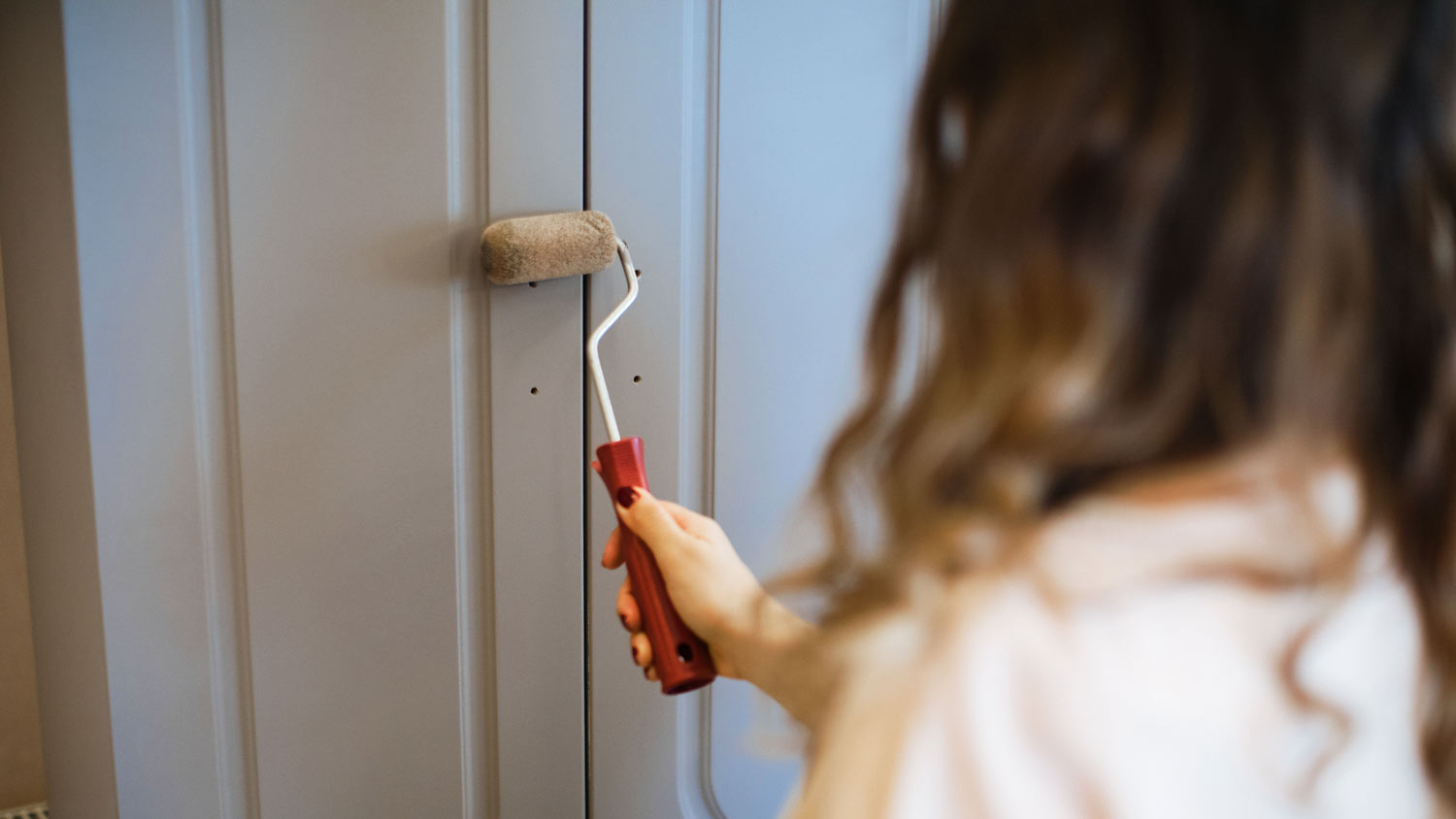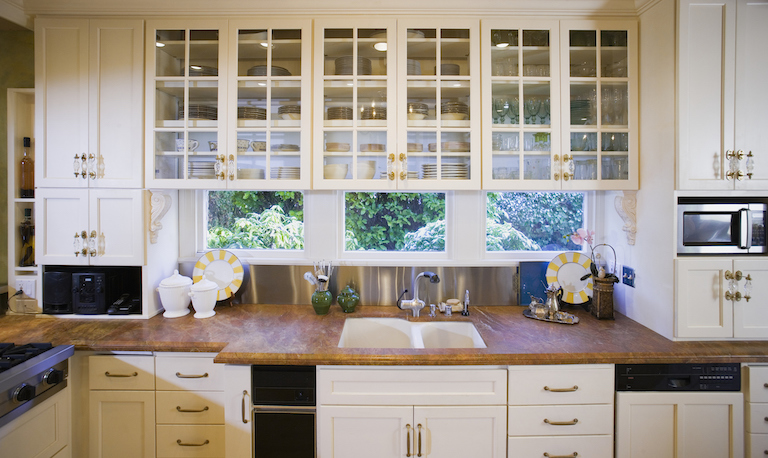
The cost of garage cabinetry and storage depends on the size, materials, labor, and more. Our guide will show you how much garage cabinets cost.
Building a home arcade cabinet is all fun and games


The arcade game is back and better than ever. The DIY arcade cabinet game revolution is in full swing, combining the traditional feel of cabinet arcade games with modern computers. Learning how to build an arcade cabinet will provide the perfect storage space to keep your game room organized with a sleek built-in model. Here’s how to build your own.
We suggest using medium-density fiberboard (MDF) to create your arcade cabinet. This engineered-wood product has a smooth finish and is easy to manipulate for all kinds of DIY projects. Plus, it’s relatively inexpensive and available at any hardware store.
The sides of your cabinet make up the overall shape. For this project, you’ll design the look of your cabinet. Create a profile following these basic guidelines, and the rest is up to you.
Draw the shape of the cabinet’s sides on one sheet of MDF.
The cabinet should measure at least 72 inches tall.
The depth of the cabinet should measure 38-inches to 42-inches.
The control panel should be near 39-inches from the floor.
The viewing screen should be a minimum of 40 inches from the floor.
The sides of the cabinet must be identical.
Clamp two sheets of MDF together. The top sheet will have the cabinet’s side drawing on top and facing up.
Using the circular saw, cut out the rough shape of the design through both sheets at once.
Cut rounded corners, inside corners, and other detailed cuts with a jigsaw while the clamps are in place.
Remove the clamps.
With sandpaper, clean up the edges of the MDF sheets as needed.
Your cabinet’s sidewalls from step two will determine the size of the boards you’ll cut in the following steps. Create a small lip around the cabinet by slightly insetting the front-exposed boards to protect their edges and create an authentic look.
Set a scribing compass to 1-inch wide.
Trace each cabinet wall's front and top edge with the compass to create a pencil line 1-inch from the edge.
To create the lip, consider this line as the edge you’ll measure from to produce the cabinet’s panel cuts.
On the remaining sheet of MDF and the leftovers from the first two, lay out the rest of the cabinet’s pieces for cutting. Use your side pieces as a guide to determine the size of the panels. Each panel should measure 1 ½-inches less than the desired overall width. You’ll need:
A front panel to cover the space from the playing console to the floor.
Console parts to cover the playing area, the front of the playing area, and underneath it. Remember that the lip line represents the limit of the panels.
Draw the panel you’ll install above the screen area, the top marquee panel, and the top panel.
Make two panels for the back that measure approximately six inches by the width of the other panels. One will be a support for the top of the cabinet, and one will be for the bottom.
Make one panel that will act as a door on the back of the cabinet. You may leave a space at the top and bottom between the support panels for ventilation.
For the screen panel, draw it large enough to leave some space on the top and bottom of the viewing area.
Draw the center cut-out screen area on the screen panel.
Create three more boards that measure the same width as the other boards and are three to four inches tall. These will be support pieces in the cabinet for securing the monitor.
While cutting the panels, remember to bevel edges that will butt together if you like. You can also use trim pieces later to hide rough edges.
Use a circular saw to cut out all of the panel shapes.
For the screen piece, drill a pilot hole where the screen will be and cut out the center with a jigsaw.
It’s easiest to install the clear screen before the assembly begins.
Using the acrylic sheet cutter, cut the acrylic sheet 2-inches larger on each dimension than the hole in the screen panel.
Drill two pilot holes through each side of the transparent sheet.
Install the sheet over the inside of the hole in the screen panel using ¾-inch screws through the pilot holes.
Now it’s finally time to build your cabinet. Leave the door uninstalled until the electronics are all in place and working.
On each sidewall, install two 2-inch angle brackets for each panel piece with ¾-inch screws. For the front panels, line the brackets up on the line that’s 1-inch from the edge.
Stand one side panel upright.
Install one rear support panel and the bottom front panel into their angle brackets. Secure them with wood glue and ¾-inch screws through the brackets.
Stand the other panel in place and secure the other side of the panels.
Next, install the top panel to keep everything standing upright.
Continue installing panels while supporting the sides until all the panels are securely in place.
Set the door panel aside for now and move on to step 8.

Use the buttons, controllers, and joysticks as templates to determine the size of each hole to drill.
Draw out the design of your console. Mark the center location of each hole.
Drill each hole from the top of the console panel with the appropriate spade drill bit.
Now you can let your creative side come out. Dress it up any way you like. Here are a few suggestions for designing your DIY arcade cabinet.
Paint it a fun color. Before painting, use painter’s tape to mask the clear acrylic screen.
Use craft paste or glue to “wallpaper” the cabinet with posters.
Cut a channel along the front edges with a router to install decorative t-shaped metal trim for a retro look.
This step depends on what electronics and devices you will put in your arcade cabinet.
Install the monitor using the 3-inch to 4-inch pieces of MDF that you cut earlier.
Install control wiring, speakers, and computer.
If you’d like help with this part, an electrical handyperson near you can help.
You’re almost ready to play.
Test the electronics to ensure your wiring works properly.
Install the door on the back of the cabinet with the door hinges and screws.
Move the machine into place.
Enjoy!
For this project, you’ll need about $250 in materials and at least an entire workday of time. Building an arcade cabinet is not a beginner’s DIY project, and the work is not easy without significant experience with power tools, electronics, and design. If the work feels a bit above your pay grade, hire a professional cabinet maker near you to build a piece to your specifications.
If your electrical installation skills are up to the task, you can likely install the electronics without much help. However, you may prefer the assistance of a local electrician to sort it all out. The cost to hire an electrician ranges between $50 and $100 per hour.
From average costs to expert advice, get all the answers you need to get your job done.

The cost of garage cabinetry and storage depends on the size, materials, labor, and more. Our guide will show you how much garage cabinets cost.

Discover the cost to paint kitchen cabinets, including average prices, cost factors, and tips to help you budget and save on your next kitchen update.

Discover custom cabinets cost for your home. Learn about average prices, installation factors, and ways to save on your custom cabinetry project.

If you are wondering who to hire to build custom cabinets, we have your back with these recommendations. Each pro will ensure a job is done right.

Thinking about adding toppers to your kitchen cabinets for additional storage space? Check out our guide with multiple ways to make it happen.

When it comes to cabinet remodels, it’s important to consider small details. Learn how to determine the right distance between countertops and upper cabinets.